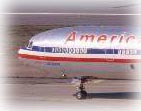INDEX
HOME Shop Online! Contact
at
The Wise Owl
for Educational
& Learning Stuff
/
Burrowing OWL Airports
Burrowing Owls Share Airports with Pilots in Florida
by Forrest S. Clark
MIAMI--Giant jet airliners and smaller aircraft share airports in Florida with
some of the tiniest rare owls in North America.
The threatened Burrowing Owls, small 9-inch-high owls weighing a quarter pound, dig burrows in airport land for their homes. According to Pamela J. Bowen, a biologist who heads the Florida Burrowing Owl Project, airports are the prime living areas for these diminutive owls. "They just love airports and golf courses and seem to be at home there," Bowen said.
A check of Bill Pranty's newest book, "The Birds of Florida," reveals that these owls have been found within Miami International, Fort Lauderdale Executive, and Tamiami airports. Two pairs were even found at Weeks Air Museum south of Miami. Bowen said they have been most recently found at Pasco County Airport and the Albert Whitted Airport in St. Petersburg, Fla.
However, on the 464,000-acre, 725-square-mile Eglin Air Force Base in Northwest Florida, an active colony has grown so large that the Choctawhatchee Audubon Society from Fort Walton Beach, Fla., has taken special notice. Pilots, airmen, and Audubon members on the base keep a watchful eye out for the owls in the midst of the busy base operations. "I saw them there, and right next to them, six Army tanks used in maneuvers on the practice bombing range," Bowen said.
Scientists think the owls can go underground in their burrows away from the noise and fumes of aircraft. There have been no known accidents between aircraft and owls, but the records are difficult to document. Many times the owls choose the airport property because it is somewhat protected from human intrusions, and many airport sites have the kind of soil that the owls need for making their burrows. The burrows cover a considerable distance underground and end with a nest cavity. The owls can remain underground for considerable time during their breeding season. "When you consider that these owls weigh the same as a quarter-pound hamburger and are inches high, it is a proof of their survival qualities," Bowen said. About 800 burrowing owl sites are believed to be in Florida, but no one has ever done a definitive survey of them. Bowen is currently seeking volunteers to assist in such a survey.
The owls have been in Florida for about 10,000 years, and despite development, they still thrive. At Miami International Airport, the owls are right inside the perimeter fence line, according to sightings recorded in the Pranty book. While it is possible that the owls do move from site to site, they have a history of remaining in the same territory for years. With more and more development throughout Florida, it is only natural that they have tried to colonize in airports and other protected lands.
This article first appeared in an online issue of In Flight USA and is reproduced here by kind permission of the publishers.
Burrowed Land
By Jeff Klinkenberg, St. Petersburg Times.
ST. PETERSBURG-- newest residents are three burrowing owls who live at downtown's Albert Whitted Municipal Airport. Tampa Bay's birding community is mighty excited according to the St.Petersburg Times. "This is the first record of burrowing owls nesting in St. Petersburg."
Endangered Owl an Environmental Concern for Kirtland
By Steve Milligan
377th Air Base Wing Environmental Public Affairs
Kirtland Air Force Base, N.M.
"The burrowing owls at Kirtland Air Force Base, N.M., have been attracting attention. According to statistics, the population increases every year." Full story.
Go to Top |
Home
Airports |
Articles |
Canada |
Florida |
Lake Charleston |
Other States
Photo Album |
Submit URL |
Zoos & Societies
Shop Online for Educational Supplies
Contact
/